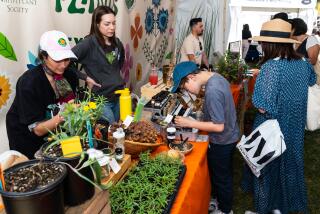Arabian lilac shrub provides year-round color
Olive green above, dusky purple below -- these are the leaves of Arabian lilac, an evergreen shrub that provides year-round color in the garden.
Arabian lilac (Vitex trifolia ‘Purpurea’) is not a true lilac but, rather, a cousin to the chaste tree (Vitex agnus-castus), a Mediterranean native. The term “lilac” comes from those purple-bottomed leaves, pleasantly fragrant and occasionally divided into three ovals (“trifolia” means “three leaves”). Each is about 4 inches long, gently creased along the midrib. Because of that crease, the purple undersides are always visible, poised on graceful branches that span 6 to 8 feet.
Although the leaves are Arabian lilac’s selling point, the plant also has a lovely bloom from summer into fall. Tiny blue and purple flowers form spires at the ends of branches and attract butterflies.
Now is an excellent time of year to plant Arabian lilac. Grow it in full or part sun -- as a specimen plant, as the background for a flowering border or as an informal hedge.
If you prefer a tree-like shape, reduce the number of stems to three and remove lower branches. Prune just after the plant flowers, or you run the risk of trimming the buds of future blooms.
Arabian lilac is also an excellent potted plant. Choose a pot at least 20 inches tall and wide to give roots plenty of room. Fill with well-draining potting soil, then top the soil with an inch or more of gravel as a mulch.
Arabian lilac is native to parts of Australia, Asia and Pacific Islands where summers are warm. Deep watering helps roots to become established in the first year, after which you can cut back the frequency of watering. In coastal gardens, provide occasional irrigation year-round. Inland, you’ll need to water more frequently, especially in summer.
More to Read
Sign up for our L.A. Times Plants newsletter
At the start of each month, get a roundup of upcoming plant-related activities and events in Southern California, along with links to tips and articles you may have missed.
You may occasionally receive promotional content from the Los Angeles Times.






